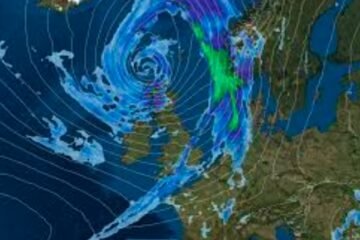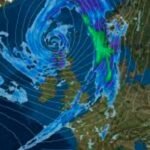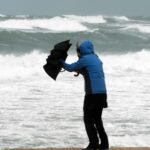Scotland has launched a fresh road safety push, urging tourist drivers in the Highlands to display special “T plates” after a sharp rise in accidents linked to unfamiliarity with left-side driving. The initiative, backed by Transport Scotland, aims to alert locals and cut down on collisions, with crashes from wrong-side driving jumping 46 percent in recent years.
Why the T-Plates Campaign Started
Road experts noticed a troubling pattern in the Scottish Highlands, where narrow, winding roads challenge even seasoned drivers. Tourists from countries that drive on the right, like the United States and much of Europe, often struggle with the switch, leading to head-on crashes and near misses.
This year alone, data shows a surge in incidents on routes like the A9 and North Coast 500, popular among visitors for their scenic views but notorious for high-speed risks. Campaigners point to real-life stories, such as foreign drivers veering into oncoming traffic after forgetting the left-hand rule at junctions.
The green T-plates, priced at about 10 pounds, feature a bold “T” for tourist and attach easily to vehicles. Creators designed them to signal caution without shaming drivers, much like learner plates but tailored for visitors.
Transport officials say the plates encourage patience from other road users, who might give extra space or slow down when spotting one.

How T-Plates Work in Practice
Testing by road safety advocates has shown promising results. One campaigner reported that locals kept a safer distance on rural roads, reducing tailgating and overtaking dangers.
The plates are fully legal, as confirmed by authorities, and can be moved between rental cars, making them practical for short trips. Unlike mandatory rules in some countries, this is a voluntary step, but experts hope widespread use will build a culture of awareness.
Drivers can buy them online or at local spots, with simple magnetic or adhesive options. Feedback from early users highlights how the plates ease stress, letting tourists focus on the stunning landscapes instead of navigation fears.
In busy seasons, like summer and fall, the Highlands see millions of visitors, amplifying the risks. This campaign ties into broader efforts, such as improved signage and apps that remind users of driving rules.
Impact on Road Safety Numbers
Recent stats paint a clear picture of the problem. Crashes involving foreign drivers have climbed steadily, with a 46 percent increase in wrong-side incidents over the past few years.
| Year | Total Highlands Crashes | Wrong-Side Driving Incidents | Percentage Increase |
|---|---|---|---|
| 2023 | 1,200 | 150 | – |
| 2024 | 1,450 | 180 | 20% |
| 2025 (so far) | 1,100 | 219 | 22% |
These figures come from official transport reports, underscoring the need for action. Experts predict that if half of tourists adopt T-plates, accident rates could drop by up to 15 percent based on similar programs elsewhere.
Beyond numbers, personal accounts reveal the human cost. Locals recall pile-ups that disrupted communities and strained emergency services, prompting calls for change.
Similar Efforts Around the World
Other nations face comparable issues with tourist drivers. In Australia, visitors from left-driving countries get reminders at airports, while New Zealand uses apps to simulate local roads.
Scotland’s approach draws from these, but adds the visible plate for instant recognition. Campaign backers, including hotel owners who see the fallout firsthand, pushed for this after their own close calls abroad.
One creator shared how a stressful drive in a right-hand country inspired the idea, leading to this homegrown solution.
This fits into global trends, where tourism booms post-pandemic have heightened road risks in scenic areas.
Challenges and Criticisms
Not everyone agrees on the plates’ effectiveness. Some argue they might make tourists targets for frustration or even scams, though no evidence supports this yet.
Others worry about enforcement, since the program relies on goodwill. Rural areas with spotty cell service also limit digital aids, making physical markers like T-plates more vital.
Despite doubts, supporters emphasize education over punishment, pairing the plates with tips on handling single-track roads and wildlife crossings.
Public response has been mixed, with social media buzzing about the idea. Many praise it as a smart, low-cost fix, while a few joke about needing plates for locals too.
What Drivers Should Know Before Hitting the Road
Planning a Highlands trip? Here are key tips to stay safe:
- Practice left-side driving in a quiet area before tackling main routes.
- Use GPS apps with voice alerts for turns and speed limits.
- Watch for narrow bridges and passing places on single-track roads.
- Rest often to avoid fatigue on long drives.
These steps, combined with T-plates, could make journeys smoother and safer for everyone.
As Scotland welcomes more visitors in 2025, this campaign highlights the balance between tourism and safety. Share your thoughts on T-plates in the comments below, or pass this article along to friends planning a Scottish adventure to help spread awareness.


















